|
Nebraska
21st - 23rd June 2008
|
|
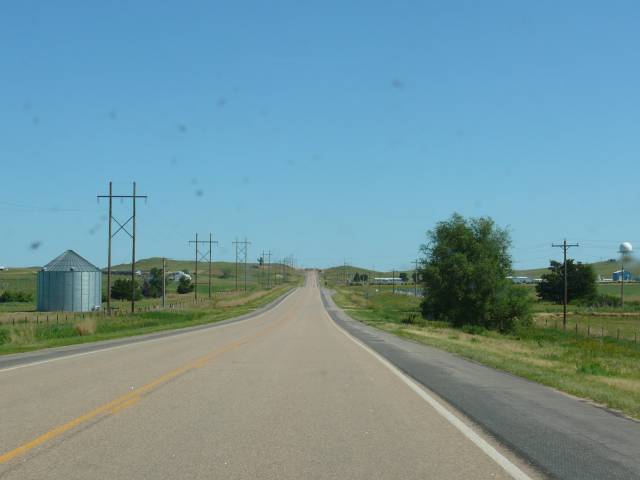
Nebraska landscape
|
As we crossed over the state line from Kansas
into Nebraska, we were greeted with the sign, "Nebraska....the good
life" and a picture of a cowboy. On driving further
into the state, it seemed that Nebraska life was mostly a rural, cattle
rearing life. Beautiful grazing pastures continued
for mile after mile, interrupted only now and again by a nodding donkey
drilling mechanism or the occasional unpleasant intensive cattle
feeding lot, which could be smelled long before it came into
view. Although the land had only a gentle undulating look to it,
we were actually at four thousand feet, up there on the High Plains.
|
|
On stopping for fuel, we noticed something
strange. For the first time in any state we'd visited, the
"Plus" higher octane unleaded fuel was considerably cheaper than
regular unleaded. This seemed to be due to its blending
with ethanol. Harvey seemed to enjoy his fuel, no matter what it was
blended with.
|
|
By lunchtime we'd set up camp at Ogallala, a
town with a colourful, true Wild-West history, named after a local Sioux
tribe. Lying at the end of long cattle drives from Texas,
it was once famous for gambling, pretty girls and fast guns. We
got a real taste of the town's history at Front Street, which combined an
informative museum about life in the old days, with an old-style saloon
complete with showgirls. Each evening there would be
a shoot out in the street outside, relating to some cowboy dispute which
seemed to occur regular as clockwork at 7.15 pm! To avoid
the risk from crossfire and excessive kitsch, we quickly absented ourselves
and went to visit the nearby Lake McConaughy.
|
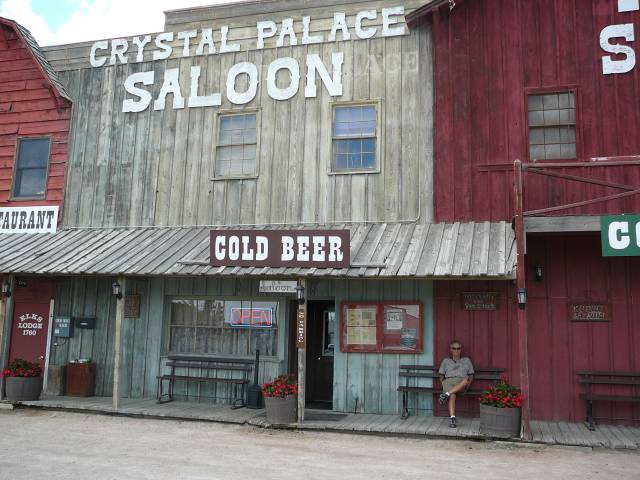
Ogalalla Front Street -
Philly looks right at home!
|
|
The huge lake with a water surface area of
30,500 acres, lying a few miles out of town, was created artificially with
the construction of the three and a half mile long Kingsley
Dam. The lake seemed to have three functions, providing
irrigation for thousands of acres of farmland in south central Nebraska, creating
electricity via the Kingsley Hydroplant and as a recreation centre for
boaters, fishermen, campers and beach lovers. Beneath the dam in
the lower level Lake Ogallala, even the cattle seemed to be enjoying a
cooling swim.
|
|
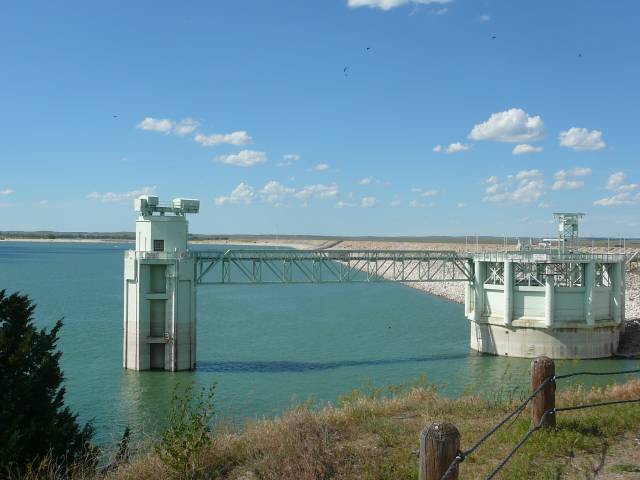
Huge Kingsley Dam at
McConaughy Lake
|
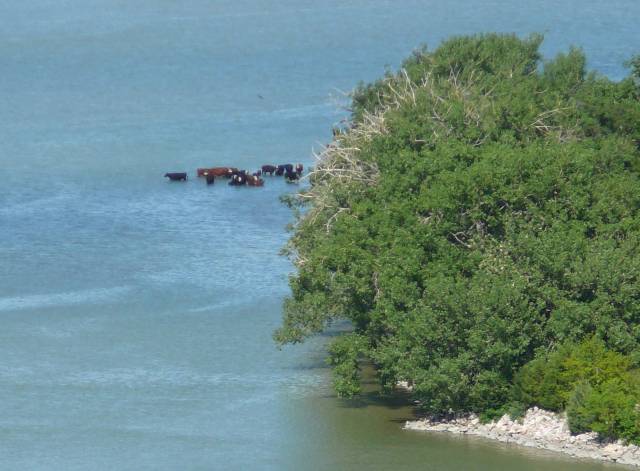
Local cattle cooling their
hooves!
|
|
On our way back to town, we made an unscheduled
stop. We came across a house we just couldn't drive
by. After all, the residents had gone to a lot of trouble
making beautiful wooden signs to advertise the fact that they were Reeses.
OK, not the type without the final "e" like us but we just felt
the urge to stop in and say hello.
The Reeses turned out to be of German, not
Welsh descent, but we were greeted like family and enjoyed spending a while
exchanging tales with Dorothy and Dwayne. Well, if somebody went
to that much trouble to advertise their "Reesness", it would have
just been rude to drive straight by!
|
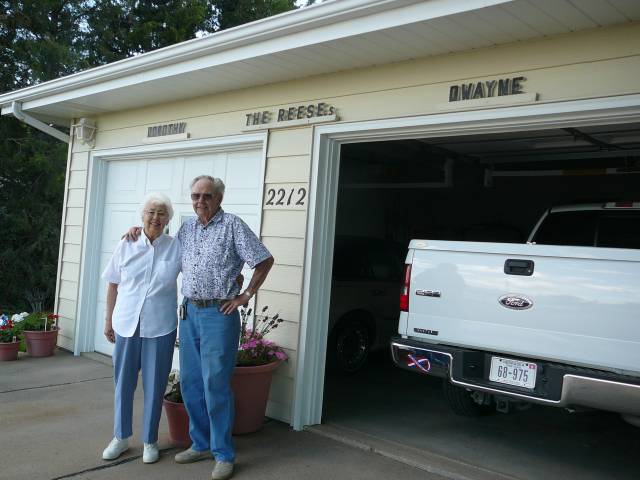
At home with the Reeses
|
|
Last stop on the tour of Ogallala was a visit to
Boot Hill Cowboy Cemetery, last resting place of several notorious cowboys
killed in gambling squabbles, amongst others. Although the
remains from the cemetery had actually been re-located to a new cemetery, the
original pioneer cemetery had been re-created in its original location and
style. It was interesting to learn during our visit the
Ogallala, that around a third of all cowboys in the "wild west
era" were not Caucasian but African-American or Hispanic, a fact we
hadn't realised from our only previous experience of the history of the
west, the movies.
|
|
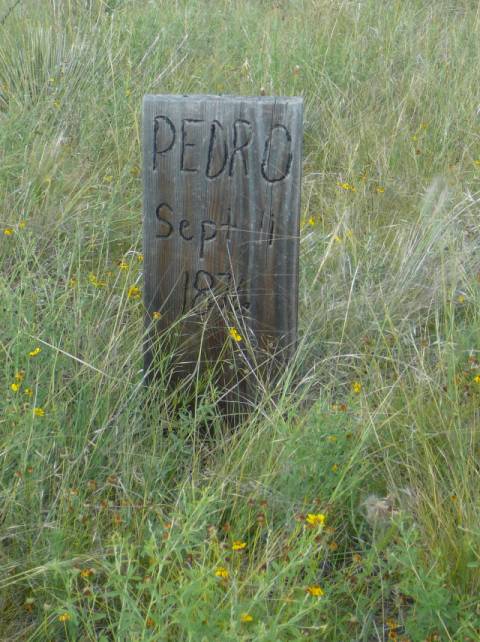
Next-to-last resting place
of Pedro, Boot Hill Cemetery.
|
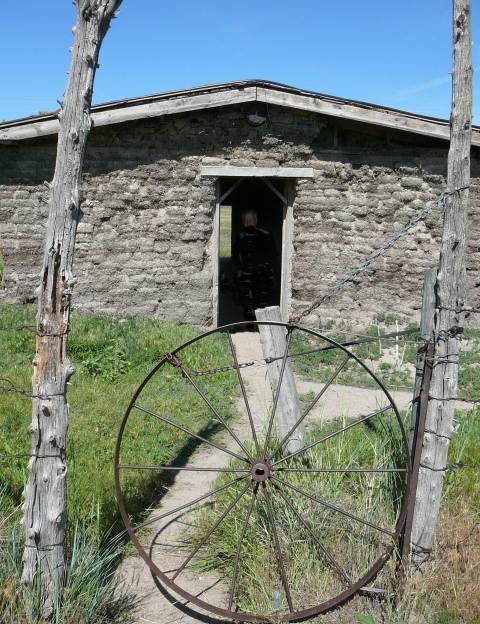
Ash Hollow State Historical
Park.
|
|
Next morning we were heading west again on
Highway 26, making our first stop at Ash Hollow State Historical
Park. Nearby Windless Hill proved a tricky spot for those
westbound wagon trains on the Oregon Trail. The descent was made
by using either people-power or oxen to slow the wagons, or locking the
wagon wheels to allow them to slide downhill. There were
surprisingly few accidents and from the crest of the hill deep ruts carved
by the thousands of passing wagons were still clearly visible.
Next came the "Rock-Quest" part of
our Nebraska tour. First we wanted to visit Courthouse and
Jail Rocks and selected a circular route on the map, which would give us
chance to see more of Nebraska's scenic byways on the
way. We certainly took the scenic route and
surprised a few local farmers unaccustomed to seeing motor homes pass
through their farmyards! Finally our destination was
in sight and we decided to drive right up to the base of the rock following
the signed route. Unfortunately the signed route turned
out not really to be a road at all, more of a rutted dirt track up a steep
hill but with no option to turn around our beloved Harvey, had found himself
having yet another unplanned adventure. With careful
driving we made it to the base of the rock where we found enough room to
turn around and head back to the safety of the paved road.
Next stop Chimney Rock, which actually had a
road and a visitor centre, making the approach far less
challenging. All of the distinctive rocks rising out of
the surrounding plains must have made excellent landmarks for the pioneers.
|
|
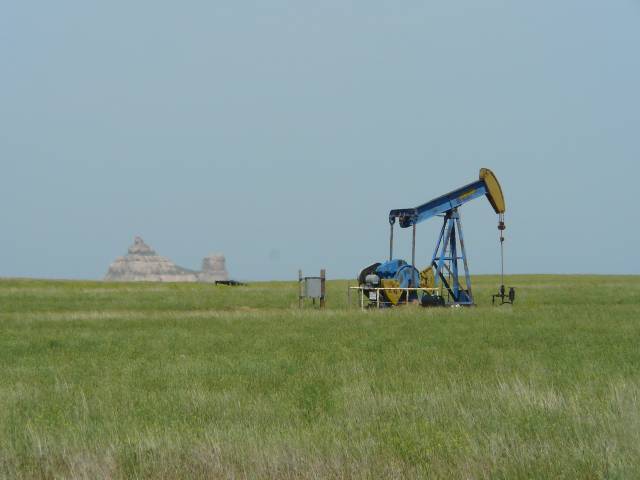
Courthouse and Jail Rocks -
from a farmer's field.
|
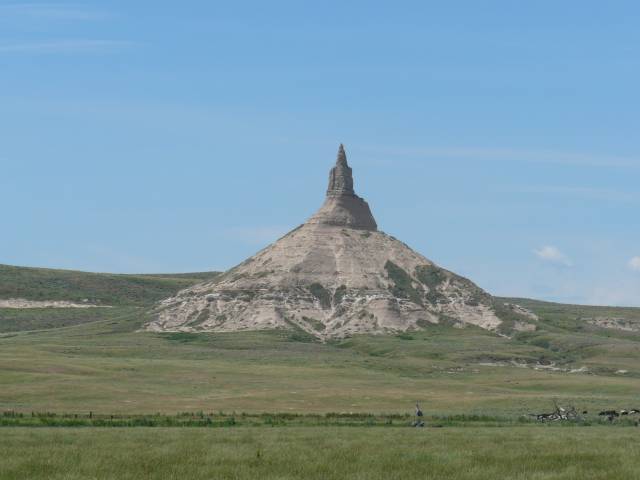
Chimney Rock
|
|
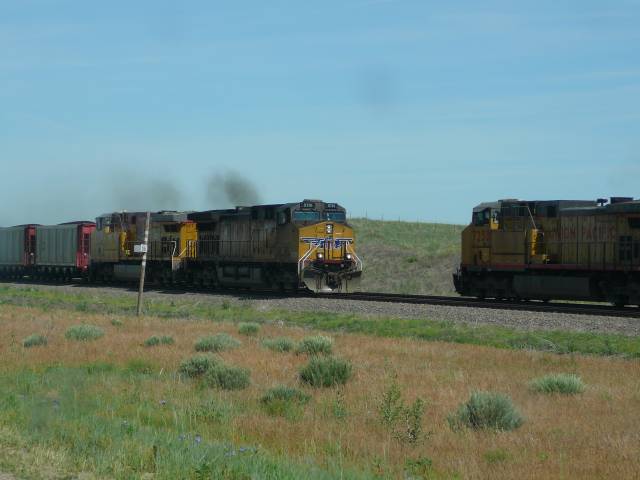
|
Many of Nebraska's highways we travelled seemed
to run alongside railroad tracks. We were amazed at the
number of trains we drove beside. We wondered where they
all came from and only later discovered that Nebraska is home to the Bailey
Railroad Yard. This yard is listed in the Guinness Book of
Records as the worlds largest reclassification yard, which would probably
explain the frequency of the extraordinarily long freight trains.
|
|
Exhausted by our adventures we sought out a
campground, finding a Nebraska State Park not too far away at Minature
Lake. This park boasted Nebraska's only
lighthouse!
At the lake Phil tried a spot of fishing,
with little success. We suddenly found ourselves in
blizzard-like conditions, the air thick with white fluff. On further
enquiries of locals, this was explained as seeds blowing off the lakeside
cottonwood trees. It wasn't hard to understand the name when we
found Harvey blanketed in the cotton-wool like seeds.
|
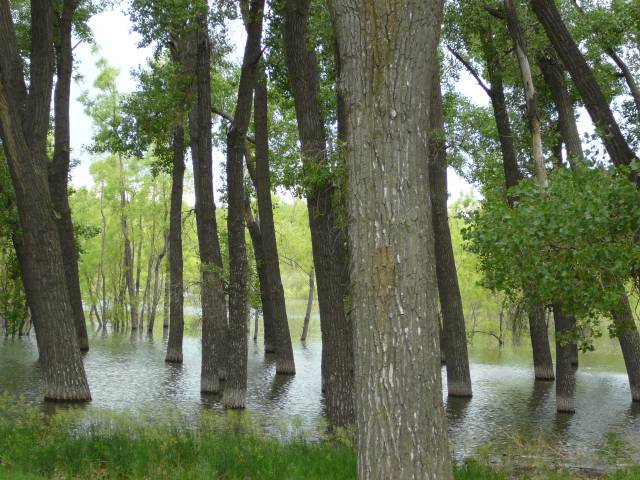
Campsite view at Lake
Minature
|
|
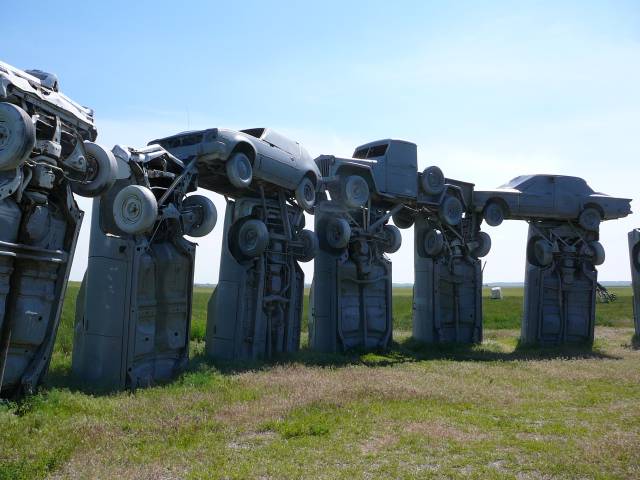
|
Last stop in Nebraska was un-missable.
We'd heard of a famous landmark near the town of Alliance.
Carhenge was a replica of the original Stonehenge historic landmark, this
one created from old cars.
The landmark was built by artist Jim Reinders
and his family as a memorial to his father, who lived on the farm where it
is located. The idea was conceived following his father's death
and the family agreed to gather again in five years to create their
masterpiece.
Since the dedication of Carhenge, fittingly
on the summer solstice in 1987, other car sculptures have been added to the
remarkable Car Art Reserve.
|











